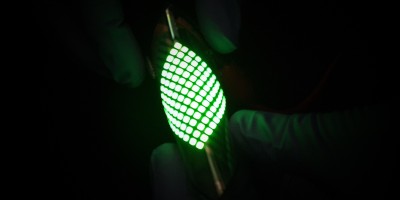Sequencing methods based on electron tunnelling could lead to breakthroughs in genomics, proteomics and glycomics, but the engineering challenges involved in delivering these devices are formidable.

References
Church, G., Deamer, D. W., Branton, D., Baldarelli, R. & Kasianowicz, J. Characterization of individual polymer molecules based on monomer-interface interactions. US patent 5,795,782 (1998).
Manrao, E. A. et al. Nature Biotechnol. 30, 349–353 (2012).
Ip, C. L. C. et al. F1000Research 4, 1075 (2015).
Heerema, S. J. & Dekker, C. Nature Nanotech. 11, 127–136 (2016).
Di Ventra, M. & Taniguchi, M. Nature Nanotech. 11, 117–126 (2016).
Hall, J. E. J. Gen. Physiol. 66, 531–532 (1975).
Akahori, R. et al. Nanotechnology 25, 275501 (2014).
Laszlo, A. H. et al. Nature Biotechnol. 32, 829–833 (2014).
Jain, M. et al. Nature Methods 12, 351–356 (2015).
Garaj, S. et al. Nature 467, 190–193 (2010).
Zwolak, M. & Di Ventra, M. Nano Lett. 5, 421–424 (2005).
Cui, X. D. et al. Science 294, 571–574 (2001).
Chang, S. et al. Nanotechnology 23, 235101–235115 (2012).
Chang, S., He, J., Zhang, P., Gyarfas, B. & Lindsay, S. J. Am. Chem. Soc. 133, 14267–14269 (2011).
Pang, P. et al. ACS Nano 8, 11994–12003 (2014).
Bai, J. et al. Nanoscale 6, 8900–8906 (2014).
Cherf, G. M. et al. Nature Biotechnol. 30, 344–348 (2012).
Fologea, D. et al. Nano Lett. 5, 1905–1909 (2005).
Briggs, K. et al. Nanotechnology 26, 084004 (2015).
Krishnakumar, P. et al. ACS Nano 7, 10319–10326 (2013).
Acknowledgements
This work was supported in part by the National Human Genome Research Institute (grant HG 006323), F. Hoffman La Roche and Recognition AnalytiX. Useful discussions with P. Pang, P. Zhang, B. Ashcroft and W. Song are acknowledged.
Author information
Authors and Affiliations
Corresponding author
Ethics declarations
Competing interests
The author is a co-founder of Recognition AnalytiX, a company that holds the rights to applications of recognition tunnelling technology in the fields of proteomics and glycomics.
Rights and permissions
About this article
Cite this article
Lindsay, S. The promises and challenges of solid-state sequencing. Nature Nanotech 11, 109–111 (2016). https://doi.org/10.1038/nnano.2016.9
Published:
Issue Date:
DOI: https://doi.org/10.1038/nnano.2016.9
- Springer Nature Limited
This article is cited by
-
Advances in single-molecule junctions as tools for chemical and biochemical analysis
Nature Chemistry (2023)
-
CdS Nanoparticles Self-Assembled in Porous Anodic Aluminum Oxide Nanochannels and Used for Carcinoembryonic Antigen Detection
Journal of Electronic Materials (2023)
-
Elucidating the dynamics of polymer transport through nanopores using asymmetric salt concentrations
Nano Research (2022)
-
Solid-state nanopores towards single-molecule DNA sequencing
Journal of Human Genetics (2020)
-
Synthetic protein-conductive membrane nanopores built with DNA
Nature Communications (2019)


